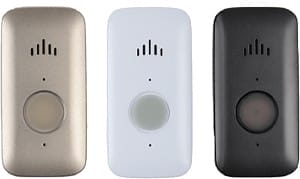[Last updated November 1, 2023]

Retirement can be a wonderful time, as you can enjoy the fruits of hard work throughout your professional career. However, you must stay on top of your retirement finances, including taking your required minimum distribution. If not, it could cost you. Here is everything you need to know about your required minimum distribution, including why you must take it on time.
What is a required minimum distribution?
A required minimum distribution (RMD) is the minimum amount of money you must withdraw from your retirement accounts every year once you reach a certain age.
Most retirement savings accounts allow you to let your savings grow tax-free over the years of your working life. Doing so defers the payment of income taxes until you reach a specific age and begin retirement withdrawals. You must take the money out of the account, as the government receives long-awaited tax revenue. Withdrawing funds also ensures you are not accumulating tax-free wealth for the remainder of your life.
The RMD requires you to take out a specific minimum amount — although you can withdraw more if you decide. You can also remove funds from these accounts and invest the money elsewhere before you reach the RMD age, reducing the minimum amount you must withdraw from the retirement account down the road.
Retirement accounts with RMDs
Several types of retirement accounts have RMDs:
- •Traditional individual retirement accounts (IRAs).
- •SIMPLE IRAs.
- •SEP IRAs.
- •Traditional 401(k)s.
- •Traditional 403(b)s.
- •Profit-sharing plans.
When do you need to start taking RMDs?
The age at which someone must begin taking their RMDs has been raised to 73 from 72 for 2023. Note that if you were 72 in 2022, you are subject to the previous RMD age of 72. The legislation includes another change to the age in the future. The new law constitutes the following:
- •Anyone who reaches 72 years of age after December 31, 2022, and age 73 before January 1, 2033, must begin taking RMDs at 73.
- •Anyone who reaches 74 years of age after December 31, 2032, must begin taking RMDs at 75.
Please note that each year, the deadline for taking your RMD is December 31, yet you can delay taking your first RMD payment until the following April. If you choose this option, you must take your first and second RMD within the same year — which increases your income and, therefore, your income tax bill.
If you are still employed and actively working by the time you reach your RMD age, you may be eligible to delay your first RMD from your current employer-sponsored retirement plan. To be eligible for this option, you must be less than a 5% owner of the business.
How to take your RMD
It’s a good idea to talk with a trusted tax professional or financial expert about how much to take for your RMD to ensure you withdraw the correct amount. Generally, people can take their RMDs when considering these steps:
Before taking your required minimum distribution, calculate how much you must remove from your accounts each year. First, find your life expectancy factor as determined in the Internal Revenue Service (IRS) life expectancy tables. Then, divide the year-end value of your retirement account by the distribution period that matches your age. Be sure to use your age on the last day of the year, December 31. Remember that you must calculate your RMD each year.
Note that the distribution period will decrease yearly, so your RMD will increase. The reasoning behind this is that the distribution period matches your life expectancy with your remaining retirement account assets. Therefore, as your life expectancy decreases, the amount you need to withdraw from your accounts increases.
As inconvenient as this mandatory increasing withdrawal sounds, senior health care, medical bills, senior living expenses, and more increase as we age. RMDs can be a great way to pay for the essential things you need as you age.
What happens if you don’t take your RMD?
It is crucial to take your yearly RMD or be willing to face the penalties. If you fail to take the RMD during the allotted timeframe, you will face consequences from the IRS.
Historically, the rate of penalty — also known as an excise tax — sat at 50% of the amount not withdrawn. However, due to new legislation, the penalty has been lowered to 25%. If you are late in withdrawing the specific minimum distribution, contact a trusted tax professional who can guide you through which forms to complete and how to pay the penalty.
If you immediately remedy the issue, your penalty may be reduced from 25% to 10%. If you feel that there was a legitimate reason for you to have missed your RMD, request a waiver from the IRS and plead your case.
Bottom line
It is essential to remember to take your RMD each year to avoid significant penalties. These funds can be helpful toward medical bills and living expenses as you grow older and your needs change. Many retirement accounts utilize RMDs, so be sure to check the details of your accounts.








